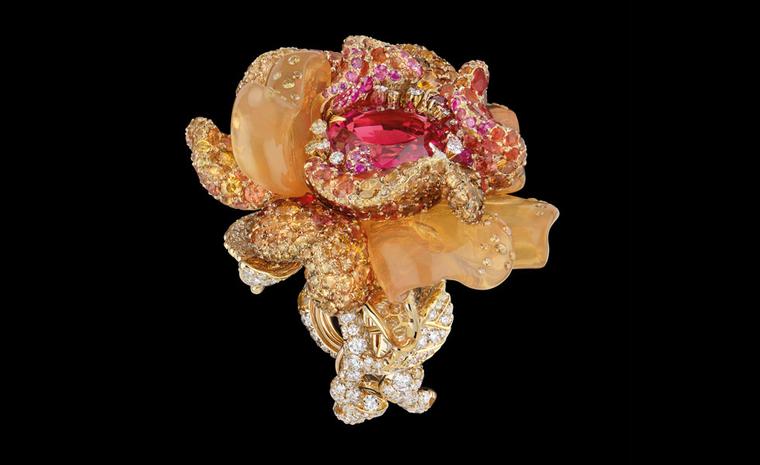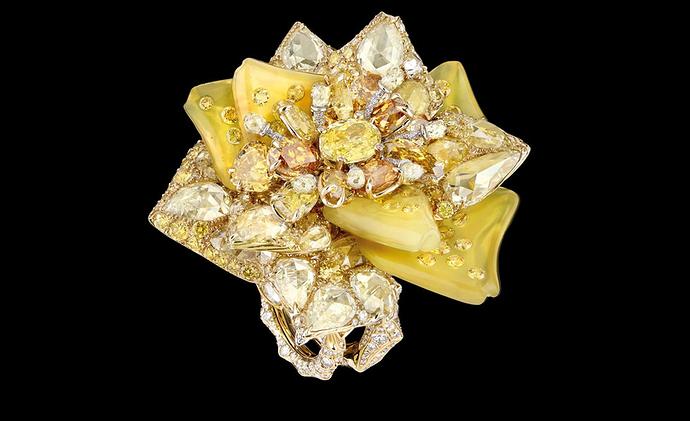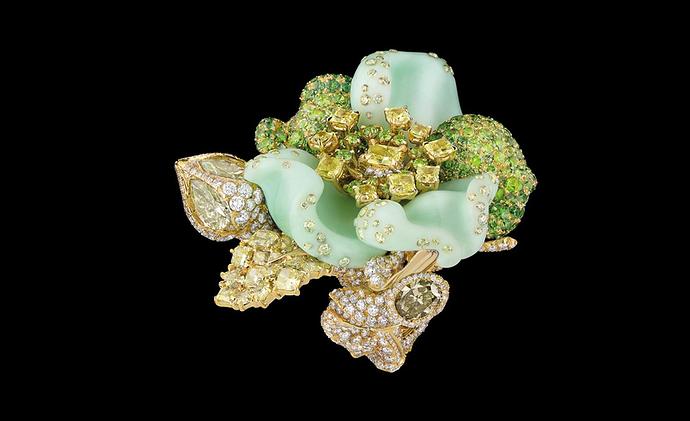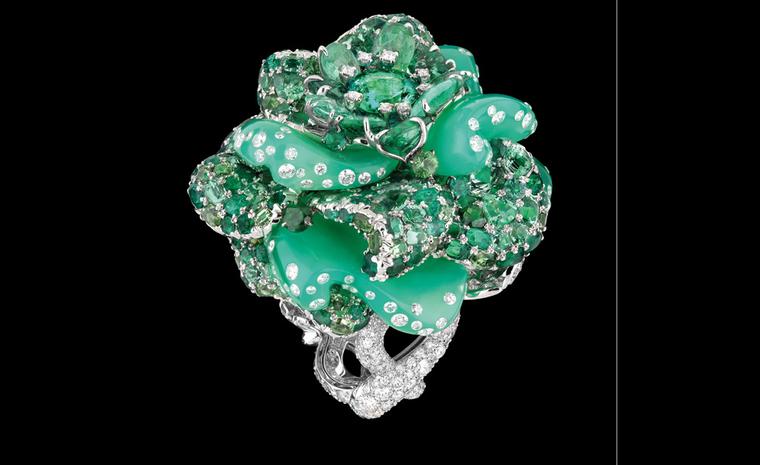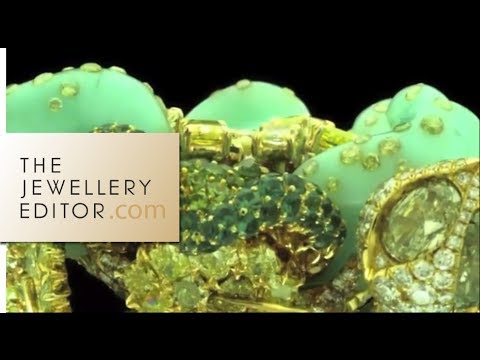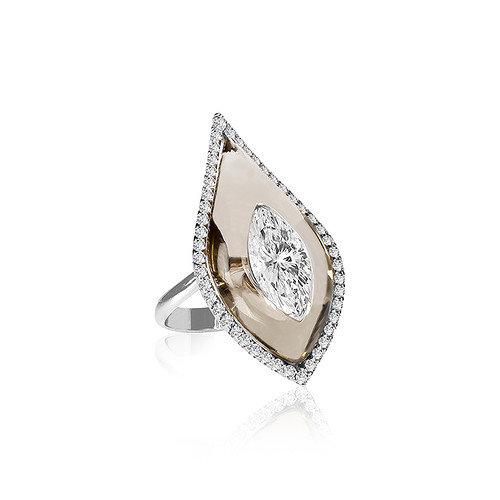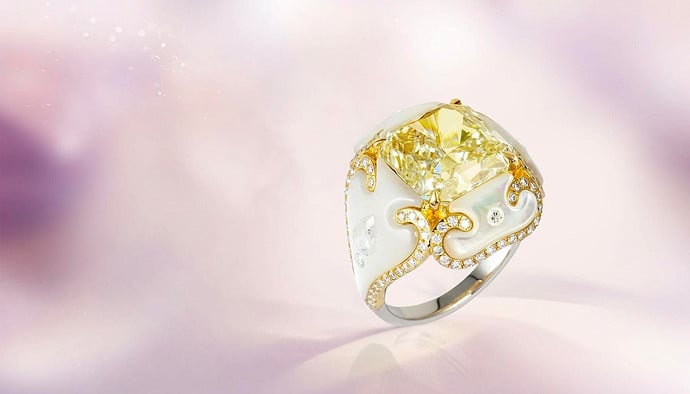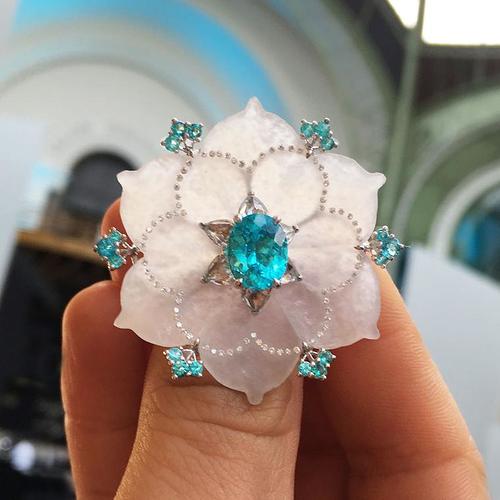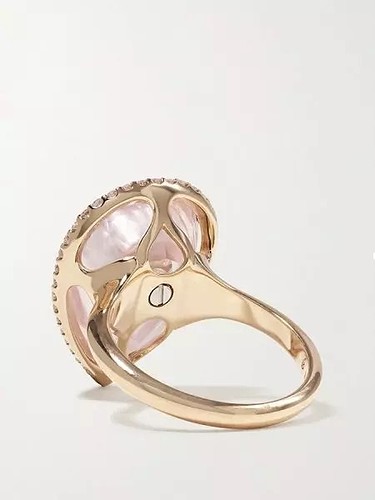Hello, Dior’s fine jewelry setts diamonds and other faceted stones directly into hardstone carvings like chrysoprase, blue chalcedony, fire opal, and Peruvian pink opal. There is no apparent bezel setting and some of the hardstones are transparent with no apparent backing. How is this possible? Its on very high end pieces by them. I have seen it with a few other makers as well. Obviously I understand how the standard bezel/tube settings are done but this does not appear to be bezel set. Can anyone give me suggestions on the way these are set? I am a lapidary carver primarily but have done standard bezel/tube setting for designs. These photos may not be ideal for this but I have seen videos with much better resolution and I cannot discern any bezel. Its almost like it was set underneath but it doesn’t seam possible.
I have no answer but those are stunning pieces! Would love to hear how it’s done!
Victoire de Castellane is the design director of Dior’s high jewelry line. Here’s a brief video interview with her from a few years ago. There are slow motion closeups of a few pieces with diamonds in hard stone. In one shot the back of the hard stone element is shown, and there is no through hole.
We must assume that the faceted stones are glued into the hard stone, since there is no metal setting at all around them. Keep in mind traditional Indian jewellery, which makes wide use of colored stones set in jade. In that case there is a foil bezel, but that is to disguise gaps between the hard stone and the gems and to seal the adhesive from moisture, as it’s really the adhesive that holds them in place.
These days there are adhesives which will hold melée very well, especially if the pieces are pendants or earrings, so not subject to as much shock as rings or bracelets. The big issue is finding an adhesive which, when in contact with the pavilion, will not interfere with the back facets’ reflectance.
Thanks for this informative reply. Yes I had seen this video but wasn’t sure if I could post it. Thank you for doing so. I am aware of the Indian style stone in stone inlaying techniques but have never done it. I was not aware they also used adhesive, I had always thought they used a soft metal foil like 24k gold and simply cold fused (not sure if this is the correct term) but basically just smashed it down in. There is another swiss high jewelry company (Boghossian) that does the same technique. I have included some photos of their work below. On the back of one of their rings they have a large screw pointing out from the finger up into the center.
It’s hard to tell what is going on with those tiny melée diamonds in the rock crystal. In the marquise ring you can see small v-prongs at the apices of the diamond. If there is a screw in the back of one of the pieces then there is certainly a metal setting retaining the stone. Could you post a photo of that?
I’m not sure which ring this is from as they make many rings with stones set into stones various ways. I found the email address to the CEO of the company and emailed him asking how the melee are set. I doubt he will answer but I figured its worth a try. If he does I will post his response.
Not sure how they did it, but here’s how I’d attempt to do so where the gold is visible.
Step 1: Cut a well with undercuts into the substrate.
<img width=“195” height=“118” style=“width:2.0333in;height:1.2333in” id=“Picture_x0020_15” src="/uploads/db0786/original/2X/b/b5643838df5547cf579060c429ccaf3cbe533862.png" alt="Shape
Description automatically generated">
Step 2: Inset a gold plug.
<img width=“190” height=“125” style=“width:1.9833in;height:1.3in” id=“Picture_x0020_16” src="/uploads/db0786/original/2X/e/ea4f4ff51ddda7afe7206b1e79c8fd9b4fff1786.png" alt="Shape, rectangle
Description automatically generated">
Step 3: Press the gold into the undercuts and form a seat for the stone just like in flush setting.
<img width=“193” height=“116” style=“width:2.0083in;height:1.2083in” id=“Picture_x0020_17” src="/uploads/db0786/original/2X/4/4f678ed0a68321b2ad68a72d9f72bcc8b62354d4.png" alt="Shape
Description automatically generated">
Step 4: Insert stone.
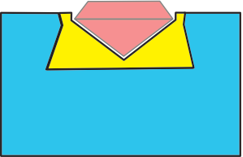
Step 5: Burnish stone into place.
<img width=“193” height=“125” style=“width:2.0083in;height:1.3in” id=“Picture_x0020_19” src="/uploads/db0786/original/2X/7/769bac799d7fc764149c926d8072ea6e6ed10fca.png" alt="Shape
Description automatically generated">
I imagine the screw in the ring photo holds the setting of a center stone in place, similar to the marquise in the ring in your first post.
One, frighteningly expensive, way that the small diamonds might be mounted in the hardstone parts is if they were in a variation of invisible setting. But these days the ultra-wealthy have so much money that the sky’s the limit on labor costs.
Hi, you may want to check out HXTAL Epoxy. I use it in my glass artwork. It is a museum grade expoxy that has the refractive index of borosilicate glass, is non-yelloing and very strong. There is also another epoxy on the attached website. You do not need much of it and need to key an eye it over a few hours because it will run if you use too much. Read up on the application
A question:
Will this epoxy take the vibration of setting in a metal, or does it degrade if used in anything that flexes over time, unlike setting into glass or stone, which remains rigid?
HXTAL, very interesting! this is a 2 part epoxy. Not one that cures with a UV light??
It might be difficult to get enough UV through the stone to cure the epoxy evenly behind it. The chemical reaction is a guaranteed cure. (when mixed correctly of course)
I know that artists who make large ground and polished glass pieces use a type of UV glue. Most that I have seen are transparent so I guess the UV can get through the large slabs of glass. I totally forgot about opaque surfaces with Uv glues. duh. thanks for your input

